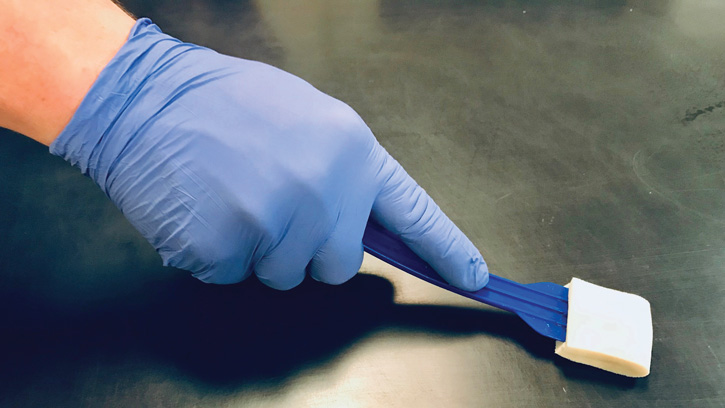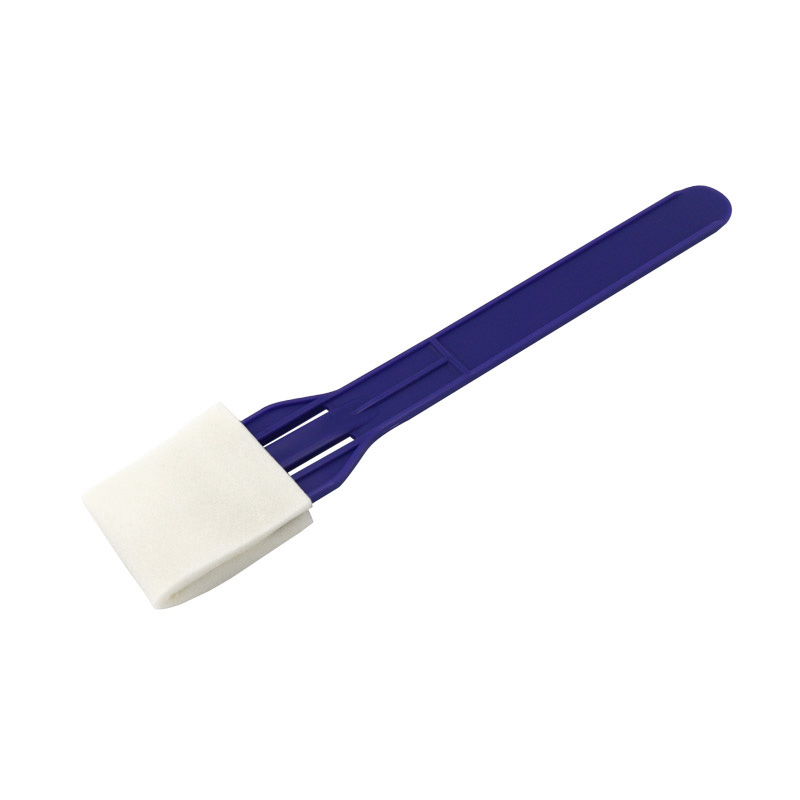การตรวจสอบด้านสิ่งแวดล้อมมีบทบาทสำคัญในการประเมินและจัดการความสมบูรณ์ของระบบนิเวศของเรา. ช่วยให้เราเข้าใจผลกระทบของกิจกรรมของมนุษย์ที่มีต่อสิ่งแวดล้อม และช่วยให้เราตัดสินใจอย่างรอบรู้เพื่อการพัฒนาที่ยั่งยืน. เครื่องมือสำคัญอย่างหนึ่งในกระบวนการนี้คือฟองน้ำตรวจสอบสิ่งแวดล้อม. ในบล็อกโพสต์นี้, เราจะแนะนำคุณตลอดคำแนะนำในการใช้ฟองน้ำตรวจสอบสิ่งแวดล้อมอย่างมีประสิทธิภาพ.

1. การตระเตรียม:
– ตรวจสอบให้แน่ใจว่าฟองน้ำตรวจสอบสภาพแวดล้อมสะอาดและปราศจากสิ่งปนเปื้อนใดๆ.
– ในกรณีที่จำเป็น, ฆ่าเชื้อฟองน้ำด้วยวิธีการที่เหมาะสม, เช่นการนึ่งฆ่าเชื้อหรือการแช่ในสารละลายฆ่าเชื้อ.
2. การเลือกสถานที่เก็บตัวอย่าง:
– เลือกสถานที่ตัวแทนสำหรับการสุ่มตัวอย่างที่เกี่ยวข้องกับวัตถุประสงค์การติดตามด้านสิ่งแวดล้อม.
– พิจารณาปัจจัยต่างๆ เช่น การมีอยู่ของสารมลพิษหรือสารปนเปื้อนที่อาจเกิดขึ้น, ความใกล้ชิดกับแหล่งมลพิษ, และการเข้าถึง.
3. ขั้นตอนการสุ่มตัวอย่าง:
– สวมอุปกรณ์ป้องกันส่วนบุคคลที่เหมาะสม (อุปกรณ์ป้องกันส่วนบุคคล) เช่นถุงมือและเสื้อกาวน์เพื่อป้องกันการปนเปื้อน.
– ทำให้ฟองน้ำตรวจสอบสภาพแวดล้อมเปียกด้วยน้ำปราศจากไอออนหรือน้ำกลั่นเพื่อให้แน่ใจว่าดูดซับได้ดีที่สุด.
– ค่อยๆ กดฟองน้ำลงบนพื้นผิวที่ต้องการเก็บตัวอย่าง, ใช้แรงกดเบา ๆ เพื่อเพิ่มการสัมผัสสูงสุด.
– ขยับฟองน้ำไปมาหรือเป็นวงกลมเพื่อให้ครอบคลุมพื้นที่เพียงพอ.
– สุ่มตัวอย่างต่อไปตามระยะเวลาที่กำหนดไว้หรือจนกว่าฟองน้ำจะถึงขีดจำกัดการดูดซึม.
– นำฟองน้ำออกจากจุดเก็บตัวอย่างอย่างระมัดระวัง, ระวังอย่าสัมผัสพื้นผิวอื่นใดที่อาจปนเปื้อนตัวอย่าง.
– วางฟองน้ำในภาชนะหรือถุงปลอดเชื้อเพื่อขนส่งไปยังห้องปฏิบัติการ.

เครื่องเก็บตัวอย่างฟองน้ำ MEIDIKE GENE
4. การขนส่งและการเก็บรักษา:
– ปิดภาชนะหรือถุงที่มีฟองน้ำเพื่อป้องกันการรั่วซึมหรือการปนเปื้อนระหว่างการขนส่ง.
– เก็บตัวอย่างไว้ในที่เย็น, สถานที่แห้งห่างจากแสงแดดโดยตรงหรืออุณหภูมิที่สูงเกินไป.
– หากไม่สามารถขนส่งตัวอย่างไปยังห้องปฏิบัติการได้ทันที, เก็บไว้ในตู้เย็นที่อุณหภูมิระหว่าง 2-8°C.
5. การวิเคราะห์:
– ส่งตัวอย่างฟองน้ำสำหรับตรวจสอบสิ่งแวดล้อมไปยังห้องปฏิบัติการที่ผ่านการรับรองเพื่อทำการวิเคราะห์โดยเร็วที่สุด.
– ให้ข้อมูลที่เกี่ยวข้องแก่ห้องปฏิบัติการเกี่ยวกับสถานที่เก็บตัวอย่าง, วันที่, และสารมลพิษหรือสารปนเปื้อนเฉพาะใดๆ ที่น่าสนใจ.
– ห้องปฏิบัติการจะดำเนินการทดสอบและวิเคราะห์ที่จำเป็นเพื่อตรวจสอบการมีอยู่และความเข้มข้นของสารมลพิษหรือสารปนเปื้อนในตัวอย่าง.
6. การกำจัด:
– หลังการวิเคราะห์, ปฏิบัติตามขั้นตอนการกำจัดของเสียที่เหมาะสมสำหรับฟองน้ำตรวจสอบสิ่งแวดล้อมและวัสดุที่เกี่ยวข้อง, ปฏิบัติตามกฎระเบียบและแนวทางปฏิบัติของท้องถิ่น.
– กำจัดฟองน้ำและวัสดุที่ปนเปื้อนใด ๆ ลงในถังขยะที่กำหนดหรือผ่านบริการจัดการขยะที่เหมาะสม.
บันทึก: สิ่งสำคัญคือต้องปรึกษากับผู้เชี่ยวชาญหรือผู้เชี่ยวชาญในการตรวจสอบด้านสิ่งแวดล้อมเพื่อให้มั่นใจถึงเทคนิคการสุ่มตัวอย่างที่ถูกต้องและการปฏิบัติตามกฎระเบียบหรือแนวปฏิบัติเฉพาะ.


















